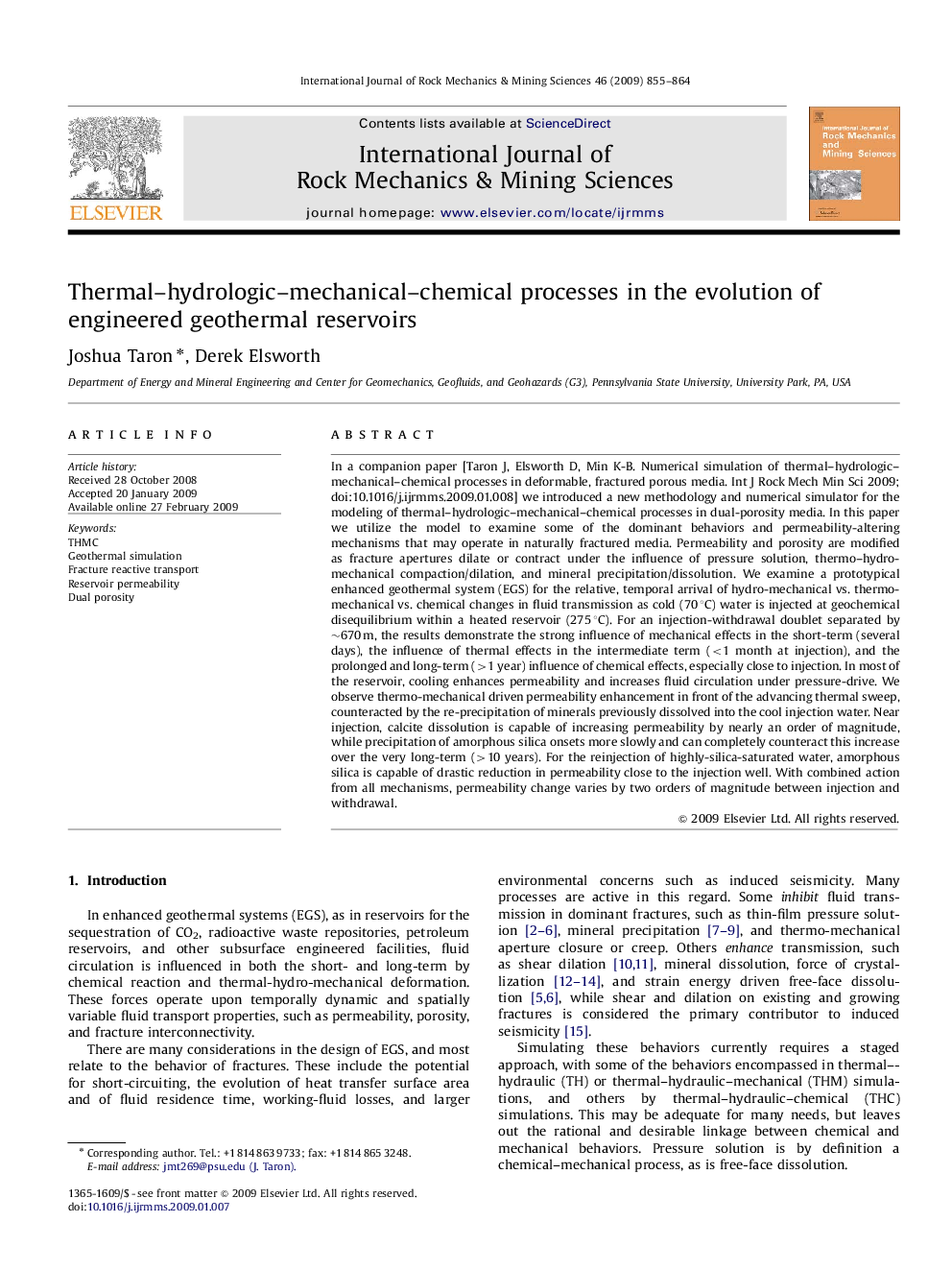| کد مقاله | کد نشریه | سال انتشار | مقاله انگلیسی | نسخه تمام متن |
|---|---|---|---|---|
| 810039 | 1468740 | 2009 | 10 صفحه PDF | دانلود رایگان |

In a companion paper [Taron J, Elsworth D, Min K-B. Numerical simulation of thermal–hydrologic–mechanical–chemical processes in deformable, fractured porous media. Int J Rock Mech Min Sci 2009; doi:10.1016/j.ijrmms.2009.01.008] we introduced a new methodology and numerical simulator for the modeling of thermal–hydrologic–mechanical–chemical processes in dual-porosity media. In this paper we utilize the model to examine some of the dominant behaviors and permeability-altering mechanisms that may operate in naturally fractured media. Permeability and porosity are modified as fracture apertures dilate or contract under the influence of pressure solution, thermo–hydro-mechanical compaction/dilation, and mineral precipitation/dissolution. We examine a prototypical enhanced geothermal system (EGS) for the relative, temporal arrival of hydro-mechanical vs. thermo-mechanical vs. chemical changes in fluid transmission as cold (70 °C) water is injected at geochemical disequilibrium within a heated reservoir (275 °C). For an injection-withdrawal doublet separated by ∼670 m, the results demonstrate the strong influence of mechanical effects in the short-term (several days), the influence of thermal effects in the intermediate term (<1 month at injection), and the prolonged and long-term (>1 year) influence of chemical effects, especially close to injection. In most of the reservoir, cooling enhances permeability and increases fluid circulation under pressure-drive. We observe thermo-mechanical driven permeability enhancement in front of the advancing thermal sweep, counteracted by the re-precipitation of minerals previously dissolved into the cool injection water. Near injection, calcite dissolution is capable of increasing permeability by nearly an order of magnitude, while precipitation of amorphous silica onsets more slowly and can completely counteract this increase over the very long-term (>10 years). For the reinjection of highly-silica-saturated water, amorphous silica is capable of drastic reduction in permeability close to the injection well. With combined action from all mechanisms, permeability change varies by two orders of magnitude between injection and withdrawal.
Journal: International Journal of Rock Mechanics and Mining Sciences - Volume 46, Issue 5, July 2009, Pages 855–864